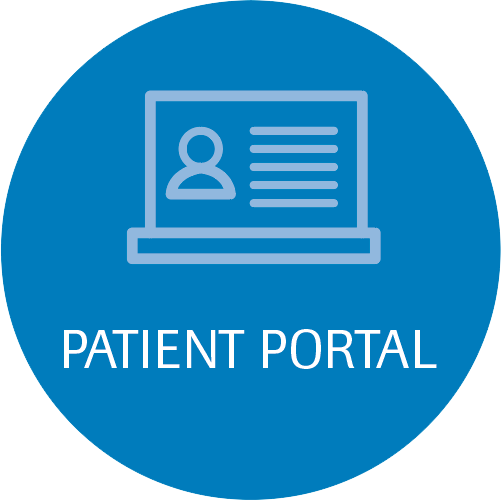What is a Paracentesis/Thoracentesis and what does it do?
Paracentesis is a procedure to take out fluid that has collected in the belly (peritoneal fluid). This fluid buildup is called ascites . Ascites may be caused by infection, inflammation, an injury, or other conditions, such as cirrhosis or cancer. The fluid is taken out using a long, thin needle put through the belly. The fluid is sent to a lab and studied to find the cause of the fluid buildup. Paracentesis also may be done to take the fluid out to relieve belly pressure or pain in people with cancer or cirrhosis.
Why is it done?
Paracentesis may be done to:
- Find the cause of fluid buildup in the belly.
- Diagnose an infection in the peritoneal fluid.
- Check for certain types of cancer, such as liver cancer.
- Remove a large amount of fluid that is causing pain or difficulty breathing or that is affecting how the kidneys or the intestines (bowel) are working.
- Check for damage after a belly injury.
Thoracentesis may be done to:
- Find the cause of excess pleural fluid (pleural effusion).
- Relieve shortness of breath and pain caused by a pleural effusion.
Thoracentesis is a procedure to remove fluid from the space between the lungs and the chest wall called the pleural space. It is done with a needle (and sometimes a plastic catheter) inserted through the chest wall. Ultrasound pictures are often used to guide the placement of the needle. This pleural fluid may be sent to a lab to determine what may be causing the fluid to build up in the pleural space.
Normally only a small amount of pleural fluid is present in the pleural space. A buildup of excess pleural fluid (pleural effusion ) may be caused by many conditions, such as infection, inflammation, heart failure, or cancer. If a large amount of fluid is present, it may be hard to breathe. Fluid inside the pleural space may be found during a physical examination and is usually confirmed by a chest X-ray.
Who performs the test?
The Paracentesis/Thoracentesis itself is performed by a physician with the assistance of an ultrasonographer specifically trained or certified in Ultrasound imaging.
Where does it take place?
Jackson Hospital Outpatient Center Hudnall Building, Room 110, located adjacent to the Hospital.
How long does it take?
This exam generally takes about 45 minutes to complete.
What can I do to make it a success?
Paracentesis
Tell your doctor if you:
- Are taking any medicine.
- Are allergic to any medicines, including numbing medicines (anesthetics).
- Have had bleeding problems or are taking blood thinners, such as aspirin, nonsteroidal anti-inflammatory drugs (NSAIDs), or warfarin (Coumadin).
- Are or might be pregnant.
Thoracentesis
Tell your doctor if you:
- Are taking any medicines.
- Have allergies to any medicines, including anesthetics.
- Have any bleeding problems or take blood thinners, such as aspirin or warfarin (Coumadin).
- Are or might be pregnant.
Also, certain conditions may increase the difficulty of thoracentesis. Let your doctor know if you have:
- Had lung surgery. The scarring from the first procedure may make it difficult to do this procedure.
- A long-term (chronic), irreversible lung disease, such as emphysema.
What should I do before the exam?
No special preparation is needed for this study.
What happens during the exam?
Paracentesis
The site where your doctor will put the needle is cleaned with a special soap and draped with sterile towels.Your doctor puts a numbing medicine into your belly. Once the area is numb, your doctor will gently and slowly put the paracentesis needle in where the extra fluid is likely to be. Your doctor will be careful to not poke any blood vessels or the intestines. An ultrasound may be used to show where the fluid is in your belly. If a large amount of fluid is present, the paracentesis needle may be hooked by a small tube to a vacuum bottle for the fluid to drain into it.
Thoracentesis
During the procedure, you will be seated but leaning forward on a padded bedside table. An ultrasound may be used to confirm the location of fluid in your chest. The needle site between your ribs will be cleaned with an antiseptic solution. Your doctor will give you a local anesthetic in your chest wall so you won’t feel any pain when the longer needle that withdraws the fluid is inserted. Once the area is numb, your doctor will insert the needle to where the fluid has collected (pleural space). You may feel some mild pain or pressure as the needle enters the pleural space.
A syringe or a small tube attached to a vacuum bottle is used to remove the pleural fluid. Your doctor will collect fluid to send to the lab. Once the fluid is removed, the needle or small tube is removed and a bandage is put on the site.
An X-ray may be taken right after the procedure to make sure that no complications have occurred.
What should I do after the exam?
You will be given detailed discharge instructions to take home with you. These will have your after care instructions, what to watch for and contact information.
Contact Information:
Ultrasound Department (at main hospital): (850) 718-2582
Ultrasound Department (at OP Center): (850) 526-6702
Radiology Department: (850) 718-2580
Hospital (main operator): (850) 526-2200





